- Register
- Log in to Tune-In
- Wishlist (0)
-
Shopping cart
(0)
You have no items in your shopping cart.
Beatles News

The Beatles' Sgt. Pepper's Lonely Hearts Club Band, which Rolling Stone named as the best album of all time, turns 50 on June 1st. In honor of the anniversary, and coinciding with a new deluxe reissue of Sgt. Pepper, we present a series of in-depth pieces – one for each of the album's tracks, excluding the brief "Sgt. Pepper's Lonely Hearts Club Band" reprise on Side Two – that explore the background of this revolutionary and beloved record. Today's installment looks back at the rock summit meetings that took place during the recording of "Lovely Rita."
By early 1967, Abbey Road was one of the few remaining places on the planet where the Beatles could be guaranteed a modicum of privacy. As such, the studios had taken on an almost sacred significance, and outsiders were viewed with suspicion. It was an unspoken rule that wives and girlfriends were not welcome except on very special occasions, and even manager Brian Epstein entered at his own peril. Once during a studio visit, he dared to suggest that the singing sounded slightly flat. "You look after your percentages, Brian. We'll look after the music," John Lennon shot back. Epstein made himself scarce after that.
By: Jordan Runtagh
Sou details

Is this George Harrison’s first ever guitar?
The dusty instrument surfaced after spending more than half a century being hidden in a Cheshire cupboard.
Until now, it was believed his oldest surviving guitar was an Egmond, which was auctioned off to an anonymous buyer in the mid 1980s.
George’s mother Louise helped the 14-year-old buy the Egmond from a school friend for £3, after the family moved to a council house in Speke. With his mother’s encouragement, George mastered the beginner’s guitar after a few months and asked for a new one.
Louise saw her son’s musical flair and saved up until she could afford a Hofner President. The President was a middle-of-the-range electric guitar and cost Louise around £30, and was a step up from his primitive Egmond.
A year later, still aged 14, Harrison joined school pal John Lennon’s band ‘The Quarrymen’, on Paul McCartney’s recommendation.Lennon was unconvinced by George’s ability to begin with, but allowed him to remain in the band.
After changing the band’s genre from skiffle to rock and roll, all but Lennon, McCartney, and Harrison left and two years later, details
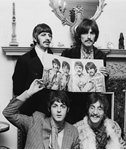
One of the great perks of being a Beatles buff is that the band left plenty of unalloyed masterpieces, and a couple of dark horses, that make for a lot of fun arguments you can have in your head, changing course when need be and reversing field like your last series of thoughts existed for the sole purpose of creating totally oppositional ones. That’s a pretty Beatle-y conceit, as if you’ve passed through that Sea of Holes in Yellow Submarine, with your previously held opinions shape-shifting in the process.
It’s not the case now, but as we mark the 50th anniversary of the June 2, 1967 release of Sgt. Pepper’s Lonely Hearts Club Band, it’s worth noting that from the time of that release until, say, the mid-1990s, this was the album you were told was, far and away, the best album that had ever been released. To question this was to go against a veritable rock and roll Commandment in which it was writ: The Band Leader Hereforth Known as Sgt. Pepper Presides Over the Greatest Musical Platter There Ever Shall Be.
As a kid, I spent an ungodly amount of time ranking The Beatles’ albums in my head. I never had Pepper first, but I always had a qualifier for my argument, which we shall details

WALLINGFORD — More than 20 bands will come together for a Beatles music festival June 10 at the Oakdale Theatre, a new venue for the annual gathering.
The event said goodbye to Danbury, where it was held for the past five years, and hello to the Oakdale as part of an expansion, said Charles Rosenay, executive producer of Liverpool Productions.
“We have double the amount of bands,” Rosenay said. “Moving to the Oakdale gave the flexibility of being indoors and outdoors.”
The festival will incorporate the Oakdale’s dome stage, dubbed Pepperland, as well as the outdoor patio, called the Octopus’s Garden. If the rain comes, the outside stage will follow the sun inside to a breakout convention room.
Rosenay’s entertainment agency conducts Beatles history tours of Liverpool and London every summer, and also produced Beatles conventions for several years.
He said the conventions focused on memorabilia and special guests, but the festivals are “all about the music.”
A central Connecticut-based Beatles tribu details

Fifry years later, Dion DiMucci still isn’t sure how he wound up among the more than 50 colorful and familiar faces that make up the iconic collage that is the cover of The Beatles’ “Sgt. Pepper’s Lonely Hearts Club Band” album. But from “the kind of guess work I can do about that,” he thinks it probably comes down to a shared reverance for the roots of rock and roll and a shared love of brown fringed suede.
RELATED: SGT. PEPPER NOT THE ONLY GREAT ALBUM OF 1967
Whatever the reason, Boca Raton’s resident Rock and Roll Hall of Fame inductee and certified musical pioneer is as tickled now as he’s always been to be part of one of pop culture’s most talked-about album covers, right there on the second to the back row, between ‘Dr. Strangelove’ writer Terry Southern and actor Tony Curtis.
And in the company of W.C. Fields, Karl Jung, Mae West, Lewis Carroll, Sonny Liston, Marilyn Monroe, Marlon Brando, Lawrence of Arabia and Laurel and Hardy.
“I just remember people telling me when it came out ‘This is you on the cover,’” the 77-year-old singer of “Runaround Sue” and “The Wanderer” sa details
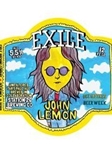
Artwork for "John Lemon Tart Pale Ale," a collaboration brew from Des Moines-based Exile Brewing Co. and Denver's Station 26 Brewing Co. (Photo: Ramona Muse Lambert/Special to the Register)
The beer isn’t the first from Exile to don the name of a dead idol. Shortly after the death of David Bowie in 2016 the brewery launched “The Rise of Ziggy Sourdust,” a dark Berliner-Style Weisse with chocolate and sour cherry that can be found in bottles or on tap.
A John Lemon launch party is scheduled for 4 p.m. on June 9 at the Exile taproom, 1514 Walnut St. Starting June 13, a limited supply of the beer will be available in bottles and kegs at central and eastern Iowa restaurants, bars and grocery retailers.
Des Moines Beer Week, founded in 2014, features a number of craft beer-related events across the metro. Self-described as a week that “aims to celebrate the Des Moines area’s growing craft beer scene,” events include the Iowa Craft Brew Festival, a meet the brewers night and beer sensory workshop.
More information can be found at exilebrewing.com and dsmbeerweek.beer.
details
The Beatles' Sgt. Pepper's Lonely Hearts Club Band, which Rolling Stone named as the best album of all time, turns 50 on June 1st. In honor of the anniversary, and coinciding with a new deluxe reissue of Sgt. Pepper, we present a series of in-depth pieces – one for each of the album's tracks, excluding the brief "Sgt. Pepper's Lonely Hearts Club Band" reprise on Side Two – that explore the background of this revolutionary and beloved record. Today's installment tells the story of the time a man claiming to be Jesus Christ visited the studio during the recording of "Fixing a Hole."
In August 1966, John Lennon faced a media firestorm in the U.S. after he uttered his infamous quote claiming that the Beatles were "more popular than Jesus." So it's not hard to imagine his amusement when, six months later, Christ himself seemed to accompany Paul McCartney into a recording session for Sgt. Pepper's Lonely Hearts Club Band.
On the night in question, the band began work on "Fixing a Hole," which, like many tracks on the album, would inspire a number of outlandish rumors. Perhaps the most persistent in the wake of the LP's 1967 release was that the title referenced "fixing a hole" in the arm of a heroin addict details

Legendary Beatles guitarist George Harrison is to be posthumously honoured with a blue plaque on his former home Kinfauns, in Esher.
Pattie Boyd, the late musician’s first wife, who lived with him at Kinfauns from 1965 to 1970, will unveil the plaque at 6.30pm today at 16 Claremont Drive, the site of the original building.
The ‘Here Comes the Sun’ star, who died in 2001, bought the property in July 1964 for £20,000, after moving out of London to escape fans on the advice of the band’s accountant, Walter Strach.
John Lennon and Ringo Starr moved to St George’s Hill, Weybridge, for the same reason.
Fans tracked George down, though, and carved messages to him on the house’s wooden gates.
In 1967 Pattie and George painted the outside of the house with psychedelic patterns inspired by the book Tantrum Art.
Visitors to Kinfauns included Mick Jagger and Marianne Faithfull, who came by once to find nobody home, then painting ‘Mick and Marianne were here and we love you’ on the front wall.
In 1968, after the Beatles returned from India, they recorded some demos at the house, which became known as the Kinfauns or Esher Demos.
details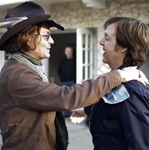
Actor Johnny Depp says "great actor" and legendary musician Paul McCartney doesn't "lack in the talent department".
Depp was happy to shoot with McCartney for the forthcoming fifth instalment of "Pirates of the Caribbean".
"Paul's a great actor. Clearly the guy is not lacking in the talent department. If I changed something up in the scene, he'd change something up in the scene. He'd make stuff up. He was amazing," Depp said in a statement.
Depp says it was his idea to get McCartney on board for the film.
He said: "A funny idea came into my head about Jack running into his Uncle Jack in jail and I thought Paul McCartney would be perfect to play him.
"I didn't know if it would be possible for me to drum up enough courage to ask him, even though he's the sweetest man in the world, and certainly the most talented. But I just did it."
Talking about how he mustered up the courage to call the Beatles star, Depp said: "I just called him and told him that I have this idea for a gag in the film that might be fun, and asked if he would be interested. He thought it sounded cool, so we started talking about character."
By: IANS
Source: Bussiness Standard

FIFTY years on from its release, The Beatles’ Sgt. Pepper’s Lonely Hearts Club Band is widely — and rightly — recognised as one of the most trailblazing albums in music history.
And while the Fab Four — John, Paul, George and Ringo — and their long-time producer and father-figure George Martin are largely credited with its freewheeling experimentation and astonishingly broad palette of styles and sounds, there was another key figure who was charged with transforming their wild thoughts into sonic reality.
Sound engineer Geoff Emerick was Martin’s right hand man at the famous Abbey Road studios in London and was instrumental in creating the sounds that would define Sgt. Pepper’sas arguably the most important album in the rock music canon
He knew from the very beginning that he was going to have his work cut out for him.
“John just said that for the next album they were just going to concentrate on sounds and make different sounding songs because they were never, ever going to perform again,” Emerick recalls half a century later.
“And George Martin was open-mouthed because every band performed and John said they were going to details
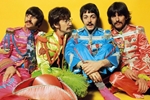
On February 28, 1967, The Beatles were hunkered down in Studio 2 at Abbey Road Studios working on a new track called Lucy In the Sky With Diamonds. Premiering over at NPR, we’ve just been gifted with the band’s first attempt at recording it.
As one might imagine for a piece of music so ahead of its time, quite a lot of takes went into creating Lucy In The Sky. But The Beatles, basically having free reign over their studio time at Abbey Road, we able to chip away at the song as they pleased.
“Take one” is completely stripped back. John’s voice is left relatively unaltered, bar some echo in the bridge, and the chorus is missing the all important “Lucy in the sky with diamonds” hook. Harrison’s Leslie-swirled lead guitar is nowhere to be seen. Nor is the subtle sheen of his tanpura playing.
But, from the moment the kaleidoscopic Lowrey organ in the song’s opening moments is struck, it’s clear the band knew what they were trying to achieve from the start.
This special release is set to feature on the 50th anniversary edition of Sgt. Pepper, which will include a six-disc super deluxe box set packed with a whopping 33 rare, unreleased outtakes from details

The Beatles' Sgt. Pepper's Lonely Hearts Club Band, which Rolling Stone named as the best album of all time, turns 50 on June 1st. In honor of the anniversary, and coinciding with a new deluxe reissue of Sgt. Pepper, we present a series of in-depth pieces – one for each of the album's tracks, excluding the brief "Sgt. Pepper's Lonely Hearts Club Band" reprise on Side Two – that explore the background of this revolutionary and beloved record. Today's installment looks back on the night John Lennon accidentally dosed himself with acid before a recording session for "Getting Better."
It could be argued that "Getting Better" is the most perfect of all latter-day John Lennon and Paul McCartney collaborations. Sure, "A Day in the Life" gets the prestige, but the fourth track on Sgt. Pepper's Lonely Hearts Club Band beautifully illustrates their very different characters. While the song was being recorded that spring, an odd incident would further fuse their souls on a psychedelic level.
McCartney devised the title while walking his sheepdog Martha through London's Regent's Park in early 1967. He was joined by journalist Hunter Davies, then shadowing the Beatles while working on their official biography. "I details
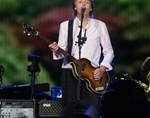
The film's bosses were initially keen to secure Rolling Stones' Keith Richards to play a pirate rocker in the latest instalment of the adventure movie but when he was unable to film the part, the team were thrilled to secure the Beatles star.
Co-director Espen Sandberg said: "So we needed another rocker and on top of our list was Paul McCartney. And Johnny said, 'Well, I have his number.' And of course Johnny has Paul McCartney's number. So he started texting him. And it went back and forth. And then [Paul] said yes. So we were super happy."
Whilst co-director Joachim Ronning added to USA Today: "It was fun. And there we went."
Keith - who was unable to make a cameo in the most recent film due to "touring commitments" - had previously made an appearance as Captain Jack Sparrow's (Johnny Depp) father Captain Teague in 2007's 'Pirates of the Caribbean: At World's End'.
Sir Paul McCartney's involvement in the fifth installment of the pirate franchise was revealed in March 2016 when a source said bosses had approached the musician about the role and directors Ronning and Sandberg had decided to add an extra scene just for him.
Source: Sunday World

The Beatles' Sgt. Pepper's Lonely Hearts Club Band, which Rolling Stone named as the best album of all time, turns 50 on June 1st. In honor of the anniversary, and coinciding with a new deluxe reissue of Sgt. Pepper, we present a series of in-depth pieces – one for each of the album's tracks, excluding the brief "Sgt. Pepper's Lonely Hearts Club Band" reprise on Side Two – that explore the background of this revolutionary and beloved record. Today's installment tells the story of how a school drawing by a three-year-old Julian Lennon inspired "Lucy in the Sky With Diamonds."
"I swear to God, or swear to Mao, or to anybody you like, I had no idea it spelt LSD," John Lennon insisted to Rolling Stone in 1970 of the title of "Lucy in the Sky With Diamonds." In interview after interview, Lennon begged listeners to accept that the Sgt. Pepper's Lonely Hearts Club Band standout was "not an acid song." The public, for their part, merely rolled their eyes.
Until the end of his life, Lennon maintained that the song was actually inspired by a painting that his three-year-old son Julian had made of Lucy O'Donnell, his classmate at Heath House nursery school. "This is the truth: My son came home with a drawing an details
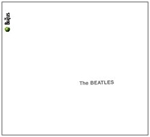
We're just eight days away from the release of the 50th anniversary edition of the Beatles' Sgt. Pepper's Lonely Hearts Club Band which was painstakingly remastered and expanded by Giles Martin, the son of the Fab Four's original producer, George Martin.
Giles has now revealed (and retracted somewhat) that he is ready to move on to his next project, the Beatles' 1968 album The Beatles (aka The White Album)
The White Album was an oddity for the band. It was their only double album and the only one where a single was never released to radio; however, you would never know it from listening to classic rock stations who still play a wide selection from the set as if they had been chart toppers including Back in the U.S.S.R., Ob-La-Di, Ob-La-Da, While My Guitar Gently Weeps, Blackbird, Rocky Raccoon, Birthday and Helter Skelter. The album also contains a trio of songs that could be placed among the most beautiful from the Beatles catalog, Julia, Good Night and I Will.
Martin told the BBC on Thursday morning "The White Album, which is the next release – that is where they started becoming indulgent. There are 70 takes of Sexy Sadie, for instance. The efficiency went slightly out the window. There’s details
